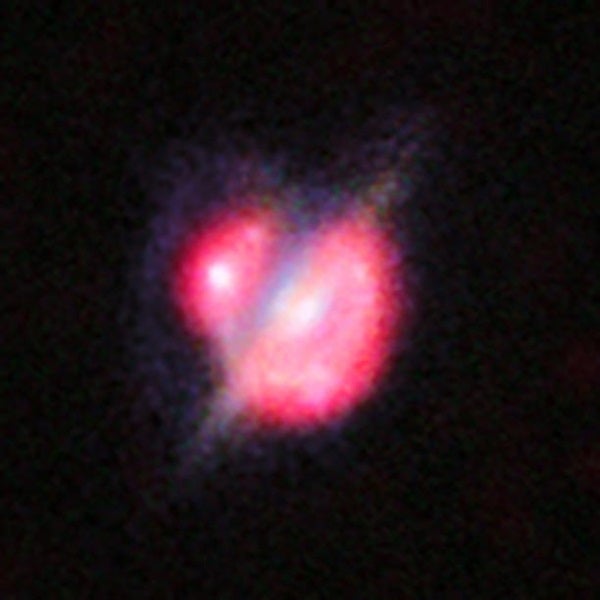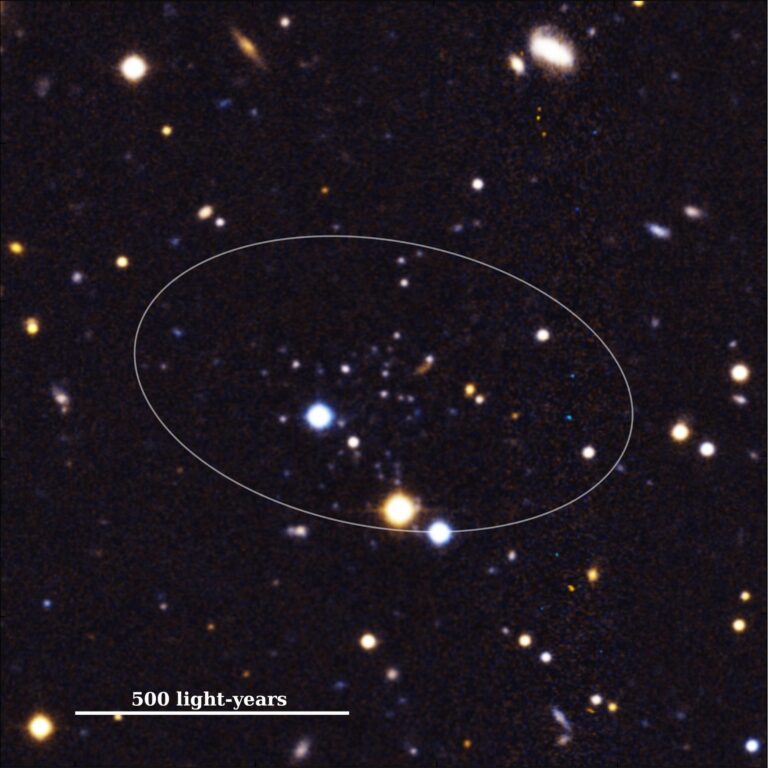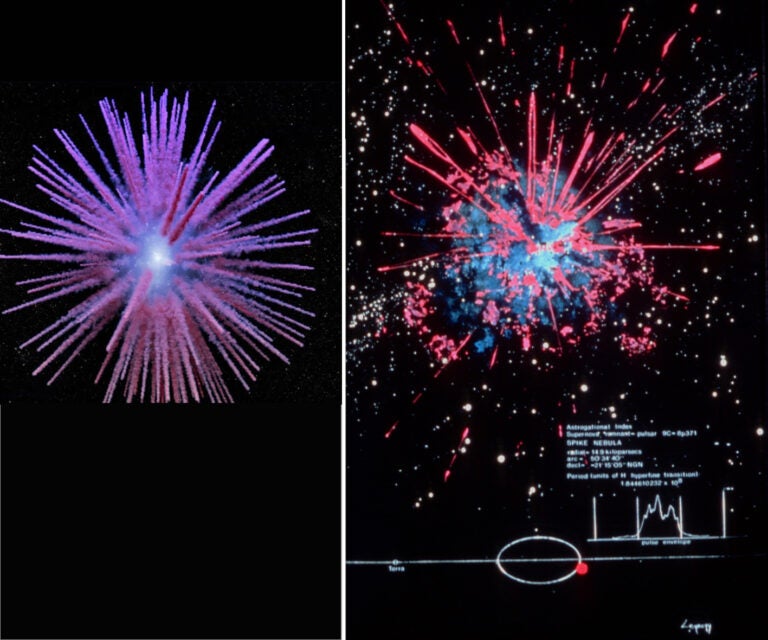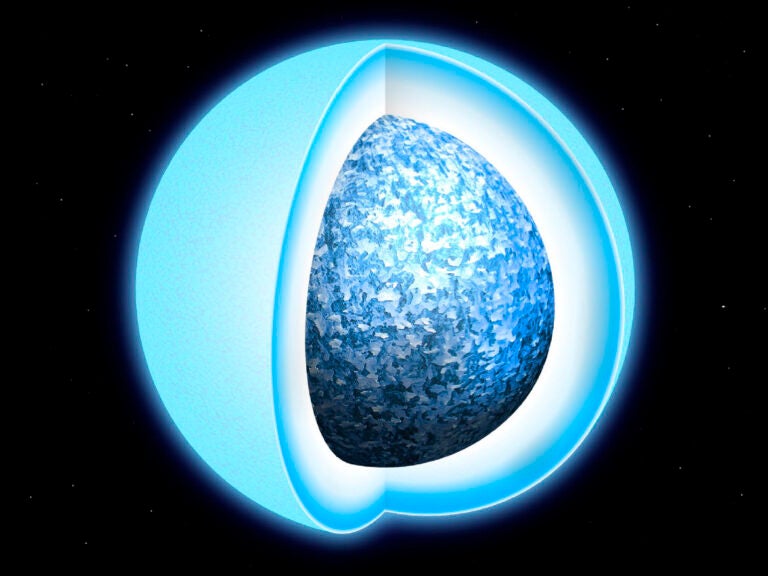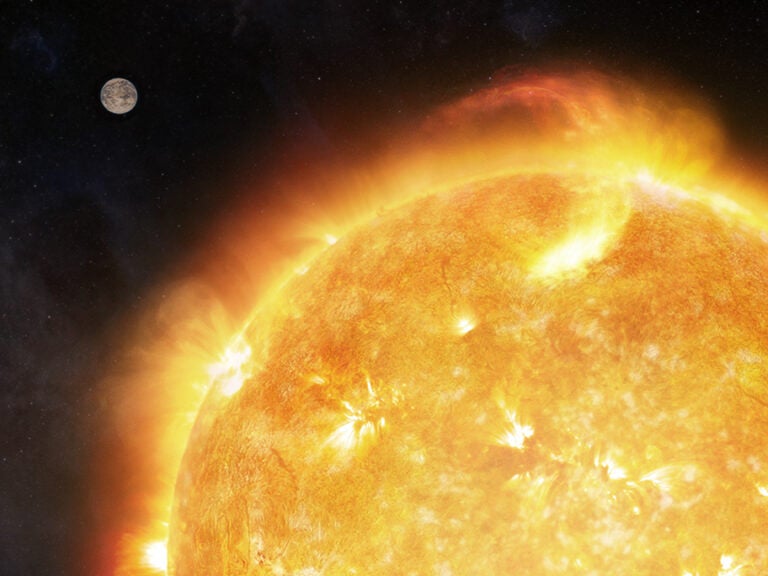To make this observation, the team also enlisted the help of a gravitational lens, a galaxy-sized magnifying glass, to reveal otherwise invisible detail. These new studies of galaxy HATLAS J142935.3-002836 have shown that this complex and distant object looks surprisingly like the comparatively nearby pair of colliding galaxies collectively known as the Antennae.
“While astronomers are often limited by the power of their telescopes, in some cases our ability to see detail is hugely boosted by natural lenses created by the universe,” said Hugo Messias of the Universidad de Concepción in Chile and the Centro de Astronomia e Astrofísica da Universidade de Lisboa in Portugal. “Einstein predicted in his theory of general relativity that, given enough mass, light does not travel in a straight line but will be bent in a similar way to a normal lens.”
Cosmic lenses are created by massive structures like galaxies and galaxy clusters, which bend light from objects behind them due to their strong gravity — an effect called gravitational lensing. The magnifying properties of this effect allow astronomers to study objects that would otherwise be invisible and to directly compare local galaxies with much more remote ones when the universe was significantly younger.
For these gravitational lenses to work, however, the foreground lensing galaxy and the one beyond need to be precisely aligned.
“These chance alignments are quite rare and tend to be hard to identify,” said Messias, “but recent studies have shown that by observing at far-infrared and millimeter wavelengths we can find these cases much more efficiently.”
HATLAS J142935.3-002836 (H1429-0028) is one of these sources and was found in the Herschel Astrophysical Terahertz Large Area Survey (HATLAS). It is among the brightest gravitationally lensed objects in the far-infrared regime found so far, even though we are seeing it at a time when the universe was just half its current age.
To study this object in further detail, the astronomers started an extensive follow-up campaign using an impressive collection of incredibly powerful telescopes, including the Hubble Space Telescope, ALMA, the Keck Observatory, and the VLA, among others.
The Hubble and Keck images revealed a detailed gravitationally induced ring of light around the foreground galaxy. These high-resolution images also showed that the lensing galaxy is an edge-on disk galaxy — similar to our Milky Way — that obscures parts of the background light due to the large dust clouds it contains.
But this obscuration is not a problem for ALMA and the VLA because these two facilities observe the sky at longer wavelengths, which are unaffected by dust. Using the combined data, the team discovered that the background system was actually an ongoing collision between two galaxies. From this point on, ALMA and the VLA played a key role in further characterizing this object.
In particular, ALMA traced carbon monoxide, which allows detailed studies of star-formation mechanisms in galaxies. The ALMA observations also allowed the motion of the material in the galaxy to be measured. This was essential to show that the lensed object is indeed an ongoing galactic collision forming hundreds of new stars each year and that one of the colliding galaxies still shows signs of rotation, an indication that it was a disk galaxy just before this encounter.
The system of these two colliding galaxies resembles a spectacular object that is much closer to us: the Antennae, which is the closest ongoing merger of two spiral galaxies. While the Antennae system is forming stars with a total rate of only a few ten times the mass of our Sun each year, H1429-0028 each year turns more than 400 solar masses of gas into new stars.
“The powerful synergy between the Herschel Space Observatory and our coordinated follow-up effort from ALMA, VLA, and other observatories around the world has dramatically improved our understanding of galaxy mergers when the universe was half its present age,” said Shane Bussmann from Cornell University in Ithaca, New York.

